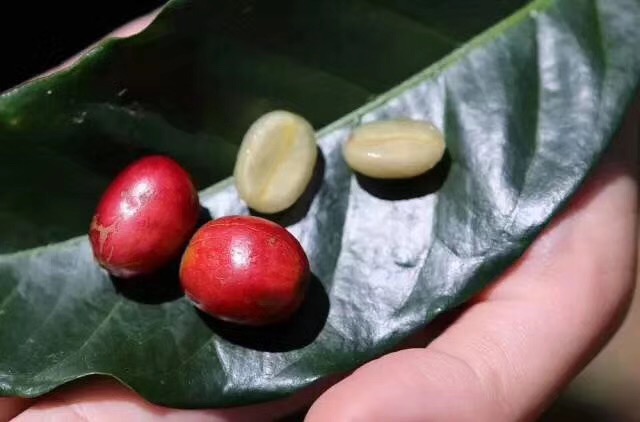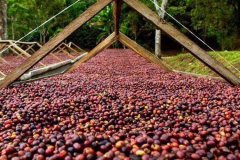Honduran coffee flavor, taste and manor information that we didn't have access to.
Speaking of Honduran coffee, many people may feel very strange. Is there coffee in Honduras? In my impression, this is one of the most restless countries in China and the United States, and the current political situation is still very unstable. The only thing that can be connected with it is the world-famous diving resort, the Honduran Blue Cave. Coffee? Will there be coffee production in such a chaotic country? However, it is true that Honduras produces coffee, and the production of coffee is still very high, and the quality of coffee is quite good.
Although it is now a backward and chaotic country, this small Central American country is a region of Mayan civilization, with many relics of Mayan civilization and beautiful tropical seaside scenery. If it were not for such a turbulent situation, it would certainly become a tourist destination. Had it not been for such a turbulent situation, the coffee here would have been better.
Geographical location
Honduras is located in the north of Central America, bordered by the Caribbean Sea to the north, the Gulf of Fonseca in the Pacific Ocean to the south, Nicaragua and El Salvador to the east and south, and Guatemala to the west. More than 3/4 of the territory is mountainous and plateau. Mountains extend from west to east, inland for lava plateaus, many mountain valleys, coastal plains.
Climatic conditions
Honduras has a tropical climate and the coastal plains have a tropical rain forest climate. The annual average temperature is 23 ℃; the rainfall is abundant, and the annual precipitation in the northern coastal zone and mountain windward slope is as high as 3000 mm. There will be "fish rain" in some areas between May and July, because tornadoes form in parts of the sea in Honduras between May and July. Tornadoes roll fish into the sky and throw them into parts of the sea, which becomes fish rain.
Coffee producing area
Honduran coffee seems strange to many coffee drinkers. For coffee production, the geographical conditions of Honduras are no less than those of its neighboring coffee-producing countries, such as Guatemala and Nicaragua.
However, in the past, Honduras was less well-known in the consumer market because it did not have strong support in the handling and transportation of raw beans. However, in recent years, Honduras has begun to change dramatically, and the emphasis on the coffee industry has slowly opened up the international popularity of Honduran coffee.
There are six main coffee producing areas in Honduras, including the five regions next to each other in the West, Santa Barbara (Santa Barbara), Copan (Copan), Ocotepeque, Lempira and La Paz, as well as El Paraiso in the southeast. Honduran coffee tastes less acidic, while caramel is more sweet.
The taste of coffee in six different producing areas is also slightly different, some slightly sour, some have a unique flavor. As it is still in the process of promoting its popularity, although the quality of coffee in Honduras is good, its price is still quite competitive. Considering the unique flavor of Honduran coffee, it is a good choice to use it as a single product or to add mixed coffee and espresso (Espresso).
Flavor characteristics
Honduran coffee comes from El Salvador. At first coffee production was in a state of unavoidable heat until the frost in Brazil in 1975. At that time, Brazil was badly hit and coffee production plummeted, while Honduras took the opportunity to "take the top". Coffee production soared from 500000 bags to 1.8 million bags and was ransacked. It was only after that that coffee production in Honduras really developed. Honduras now ranks second in coffee exports in China and the United States (second only to Guatemala), and coffee is mainly exported to the United States and Germany.
What is there to miss about coffee in this turbulent country? Honduran coffee does not have very distinct characteristics, the overall taste is rich and balanced is its biggest feature.
The granules of coffee beans in Honduras are large in shape, uniform in size and glossy in color. In order to facilitate harvesting, farmers will prune the coffee trees to no more than 150 centimeters, because if they grow too high, they have to set up ladders to pick, which is not only time-consuming, but also may damage the trees by bending branches. As the ripening period of each fruit of coffee beans is different, in order to maintain the good quality of coffee beans, it is necessary to pick them manually, and then select the ripe fruits. For coffee fruits of the same branch, it often takes several weeks to pick them all.
High-quality coffee in Honduras uses water washing to deal with coffee beans, usually after soaking, when the defective fruit will surface, it can be discarded first. Then put the good fruit into the fruit peeling machine and peel off the peel with the rotating force of the machine. Peeled fruits are screened by machines to select fruits of high quality. Usually the bigger the fruit, the better the maturity. Coffee in Honduras is dried in the sun, so there is always a hint of fruit in the taste.
Medium or shallow acidity, giving the impression of obvious but not strong. Bitterness and obvious sweetness, sometimes with beautiful floral or fruity aromas (generally speaking, beans grown in different regions and at different elevations behave differently), reminiscent of the unrest of the country. The overall taste of Honduran coffee is balanced, sour and bitter are not so strong, and there is a good balance between the two.
The extremely balanced nature of Honduran coffee makes it versatile. It can be used to mix mixed coffee or brew it as a single product. Mixing Honduran coffee with Italian concentrate will have a surprising effect. Although in troubled times, coffee can also grow its own wonderful, it is not difficult to understand why so many people are so obsessed with this black liquid, to some extent, this is not a simple love or habit, coffee is a mood or rely on it.

Important Notice :
前街咖啡 FrontStreet Coffee has moved to new addredd:
FrontStreet Coffee Address: 315,Donghua East Road,GuangZhou
Tel:020 38364473
- Prev

Methods for selection and identification of Honduran coffee beans the origin, flavor and taste of Honduran coffee
Flavor and taste characteristics: good flavor, rich and mellow, suitable for mixed drinking. Honduras is located in the north of Central America, facing the Caribbean Sea to the north, the Gulf of Fonseca in the Pacific Ocean to the south, Nicaragua and El Salvador to the east and south, and Guatemala to the west, mostly mountains and plateaus. It has a tropical climate, mild temperature and abundant rainfall, so it is an ideal place for coffee growth. Honduras
- Next

Introduction of Vera Shaki Coffee from Biya Manor
According to the manor, the Las Minas Mountains are located in the east of Guatemala and contain countless treasures belonging to Guatemala. In addition to the natural forest ecosystem and wildlife, it is rich in gold and jade veins, making the treasures of the Las Minas Mountains famous throughout Central America. In order to protect this mountain forest, today, the Las Minas Mountains have been planned as Guatemala National Park.
Related
- Does Rose Summer choose Blue, Green or Red? Detailed explanation of Rose Summer Coffee plots and Classification in Panamanian Jade Manor
- What is the difference between the origin, producing area, processing plant, cooperative and manor of coffee beans?
- How fine does the espresso powder fit? how to grind the espresso?
- Sca coffee roasting degree color card coffee roasting degree 8 roasting color values what do you mean?
- The practice of lattes: how to make lattes at home
- Introduction to Indonesian Fine Coffee beans-- Java Coffee producing area of Indonesian Arabica Coffee
- How much will the flavor of light and medium roasted rose summer be expressed? What baking level is rose summer suitable for?
- Introduction to the characteristics of washing, sun-drying or wet-planing coffee commonly used in Mantenin, Indonesia
- Price characteristics of Arabica Coffee Bean Starbucks introduction to Manning Coffee Bean Taste producing area Variety Manor
- What is the authentic Yega flavor? What are the flavor characteristics of the really excellent Yejasuffi coffee beans?

